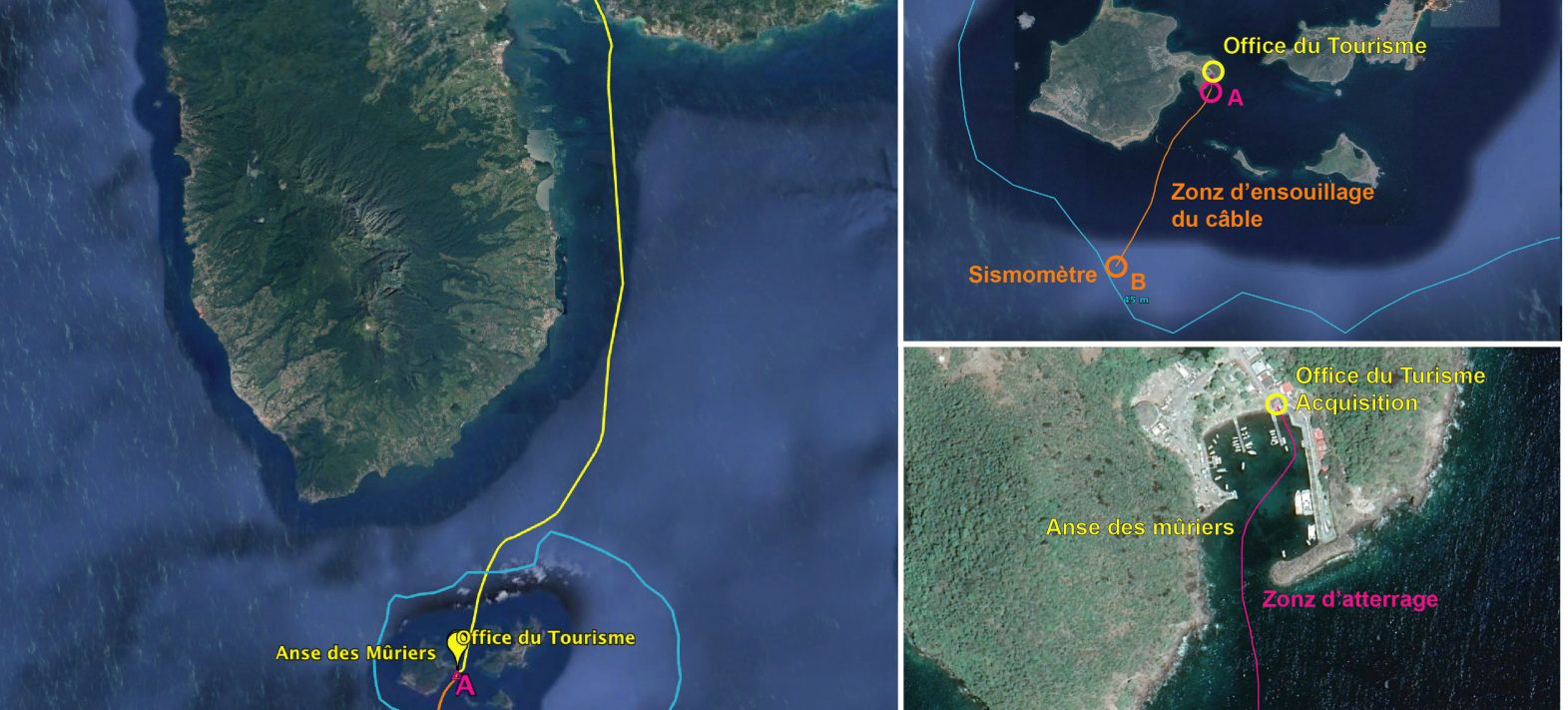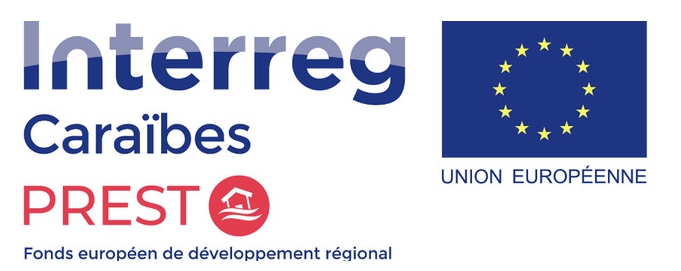Underwater observatory south of Terre-de-Bas, Guadeloupe
This Tuesday, June 1st, 2021, teams working on the PREST project (led by OVSM-IPGP) will be setting up an underwater observatory, equipped with innovative seismic, inclinometric and pressiometric sensors with optical measurements, to improve monitoring of the seismicity zone in Les Saintes. A team from Géoazur, specialists in this type of operation, will lead the FIBROSAINTES oceanographic campaign in charge of deploying this new monitoring system.

Maps showing the location of the Saintes underwater observatory.
Publication date: 05/05/2021
Observatories, Press, Research









